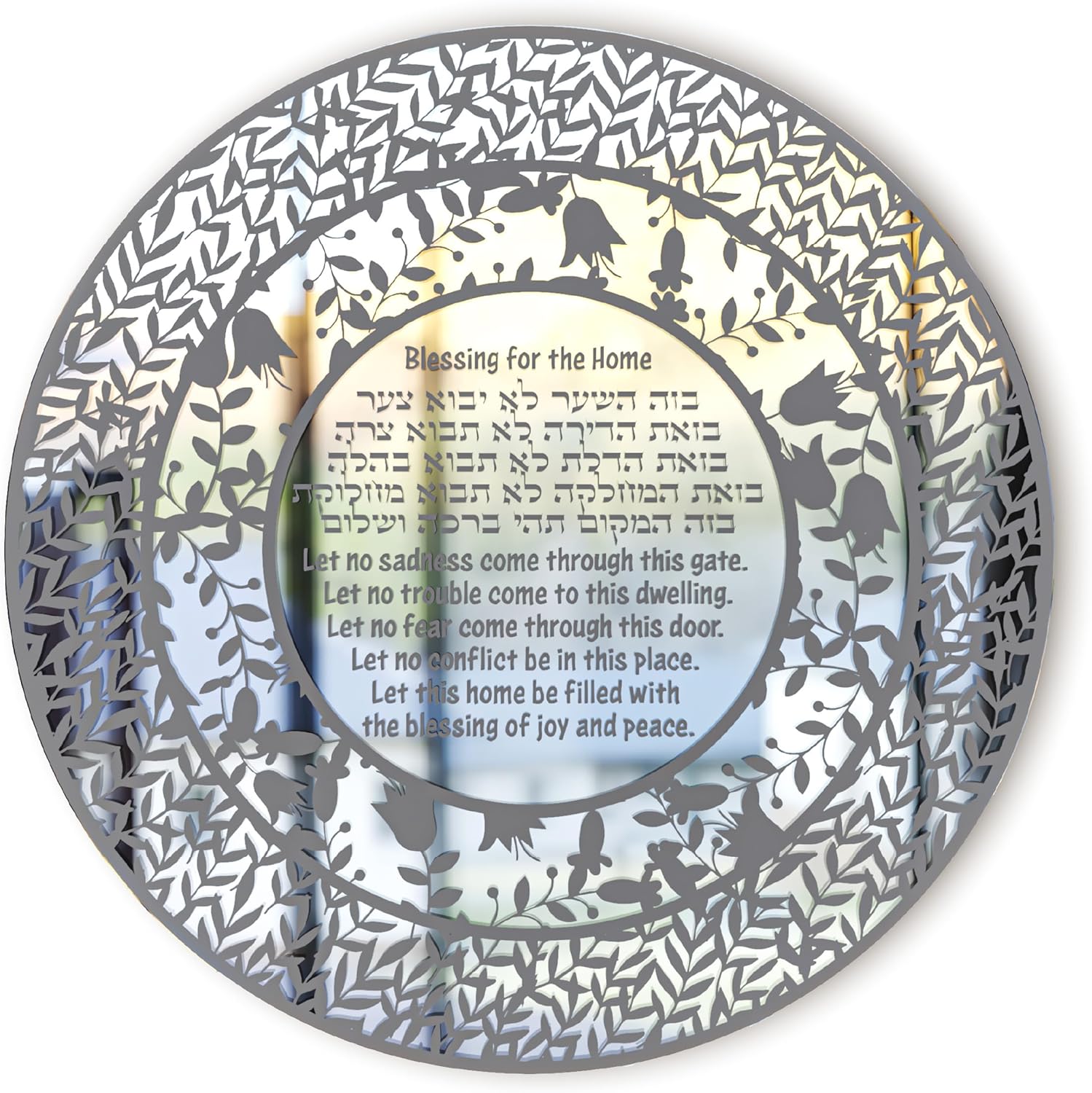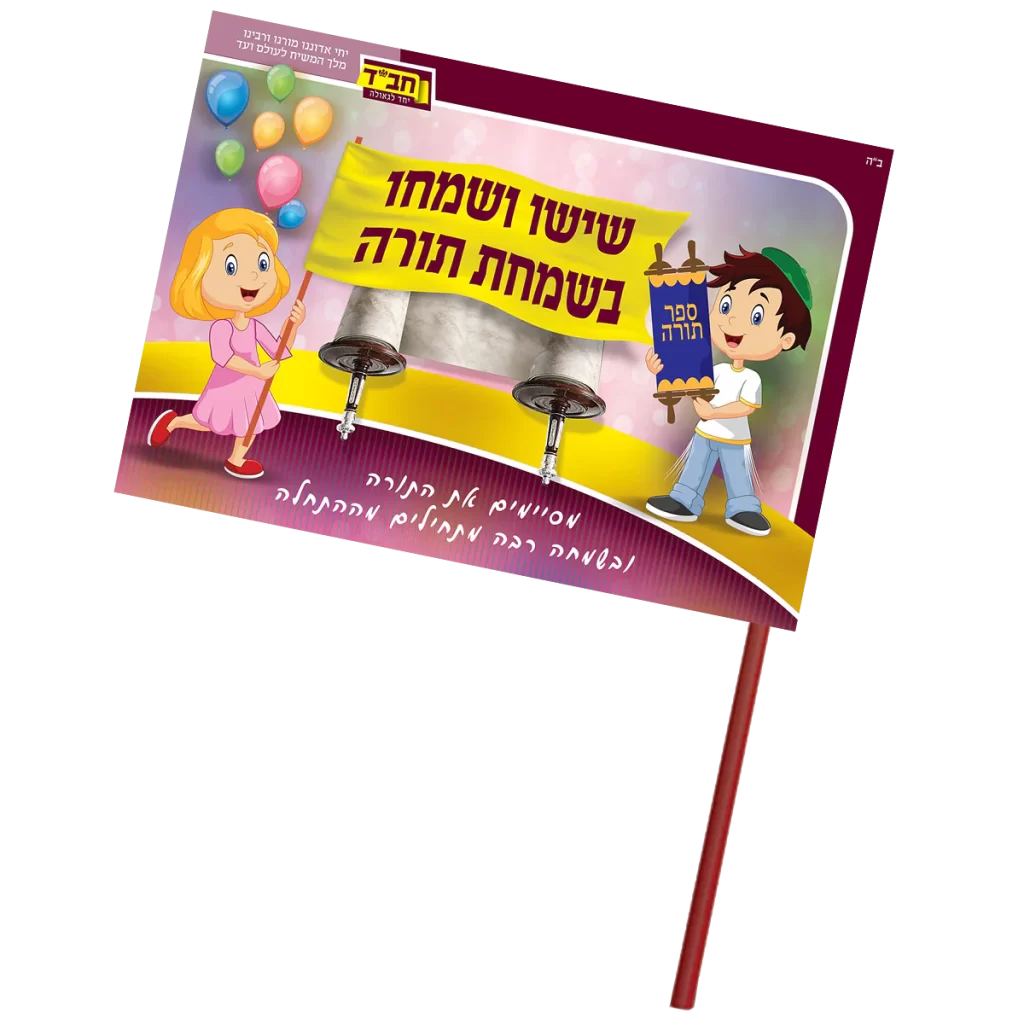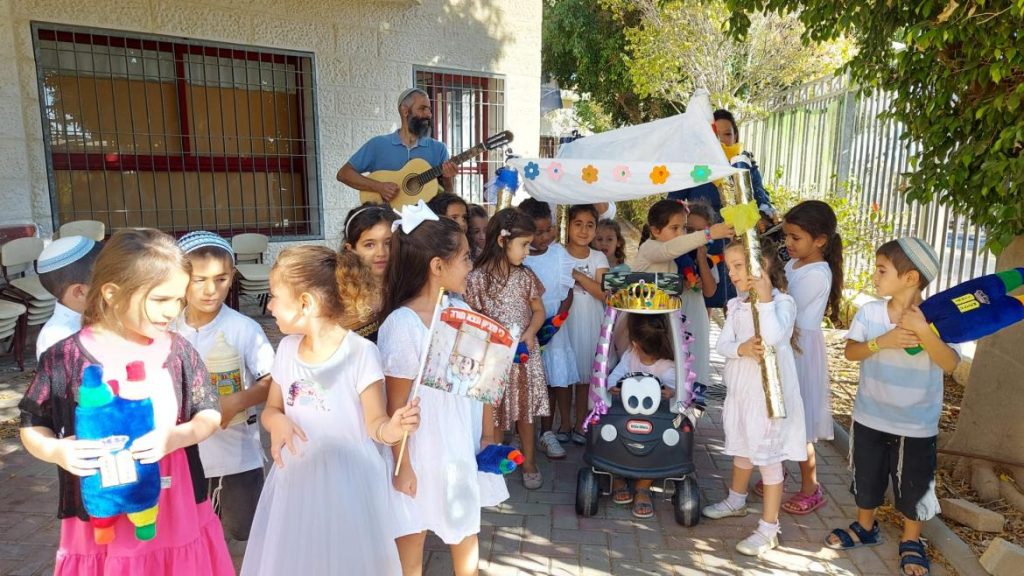Simchat Torah (שמחת תורה), meaning “Rejoicing with the Torah,” is one of the most joyous and lively celebrations in the Jewish calendar. It marks the completion of the annual Torah reading cycle and the beginning of a new one. This holiday, celebrated at the conclusion of Sukkot, is filled with dancing, singing, and a deep sense of connection to the Torah.

Jewish Home Blessing Handmade
What is Simchat Torah?
Simchat Torah is a holiday that occurs immediately after Shemini Atzeret, the final day of Sukkot. Unlike most Jewish holidays, Simchat Torah is not explicitly mentioned in the Torah, but it evolved over centuries as a joyous occasion to mark the completion of the year-long Torah reading cycle. Each week, a portion of the Torah is read during synagogue services, and by Simchat Torah, the final portion of Deuteronomy is reached, completing the entire Torah.
On Simchat Torah, the last section of the Torah is read, followed by the first verses of Genesis, symbolizing the continuous and never-ending nature of Torah study.


When Did We Start Celebrating Simchat Torah
Simchat Torah, the celebration marking the completion of the annual Torah reading cycle, began to take shape around the 9th century in Babylonian Jewish communities. While the tradition of reading the Torah publicly dates back much earlier, it was during this period that the Torah reading cycle became an annual event, culminating at the end of Sukkot. By the Medieval period, the joyous customs associated with Simchat Torah, such as Hakafot (dancing with Torah scrolls), became central to the celebration.
In the Diaspora, Simchat Torah eventually became a separate holiday, celebrated the day after Shemini Atzeret. Over time, the holiday evolved into a universally festive day with singing, dancing, and communal participation, symbolizing the continuous cycle of Torah study and the special connection between the Jewish people and their sacred texts.
Rituals and Traditions of Simchat Torah


Simchat Torah is filled with unique and festive traditions that highlight its joyous nature:
- Hakafot (הקפות): One of the central customs is the Hakafot, where congregants dance around the synagogue with Torah scrolls. There are seven circuits, symbolizing the embrace and honor given to the Torah. The celebration often spills outside into the streets, with joyous singing and dancing.
- Aliyot: On Simchat Torah, everyone in the congregation is given the opportunity to be called up to the Torah for an aliyah, a special honor of reciting blessings over the Torah reading. In many communities, even children are given a collective aliyah to ensure everyone participates in the joy.
- Flags and Sweets for Children: It is common for children to wave flags and receive treats during the celebrations, emphasizing the family-friendly and inclusive nature of the holiday.
- Kiddush and Festive Meals: The celebrations are often accompanied by a festive meal and kiddush (a blessing over wine), where the community comes together to celebrate their bond with the Torah.

Simchat Torah for Children and Families
Simchat Torah is one of the most child-friendly Jewish holidays, with many communities creating special events for younger participants. Children often carry toy Torahs or flags during the Hakafot, and in some traditions, they are paraded around the synagogue on their parents’ shoulders. They are encouraged to join in the dancing and singing, and the joy is contagious.
Additionally, sweets are distributed to the children, symbolizing the sweetness of Torah study. This helps to instill a positive association with the holiday and Torah learning from a young age.
simchat torah holiday Celebrations
Simchat Torah is not just about finishing the Torah; it’s about new beginnings. The cyclical nature of the Torah readings reminds us that learning is a lifelong journey. Simchat Torah brings the Jewish community together to celebrate their shared heritage and the centrality of the Torah in their lives. Even if you’re not Jewish it is a great experience to take part in.
Frequently Asked Questions About Simchat Torah
Simchat Torah is celebrated to mark the completion of the annual Torah reading cycle and the beginning of a new one. It is a time to rejoice in the continuous study of the Torah and its importance in Jewish life.
While Simchat Torah is a Jewish holiday, many communities are open to welcoming non-Jews to observe and even join in the celebrations, especially the dancing and singing that happen outside the synagogue.
Moadim L’Simcha” (מוֹעֲדִים לְשִׂמְחָה) is a Hebrew phrase that means “Festivals for joy” or “Times of joy.” It’s a greeting commonly used during the intermediate days of Jewish festivals, especially during Chol Hamoed חול המועד, which are the semi-festive days of Sukkot and Passover. When someone says “Moadim L’Simcha,” it’s a way of wishing others joy during these special days.
A common response to this greeting is “Chagim U’zmanim L’Sasson” (חַגִּים וּזְמַנִּים לְשָׂשׂוֹן), which means “Festivals and times for gladness.
